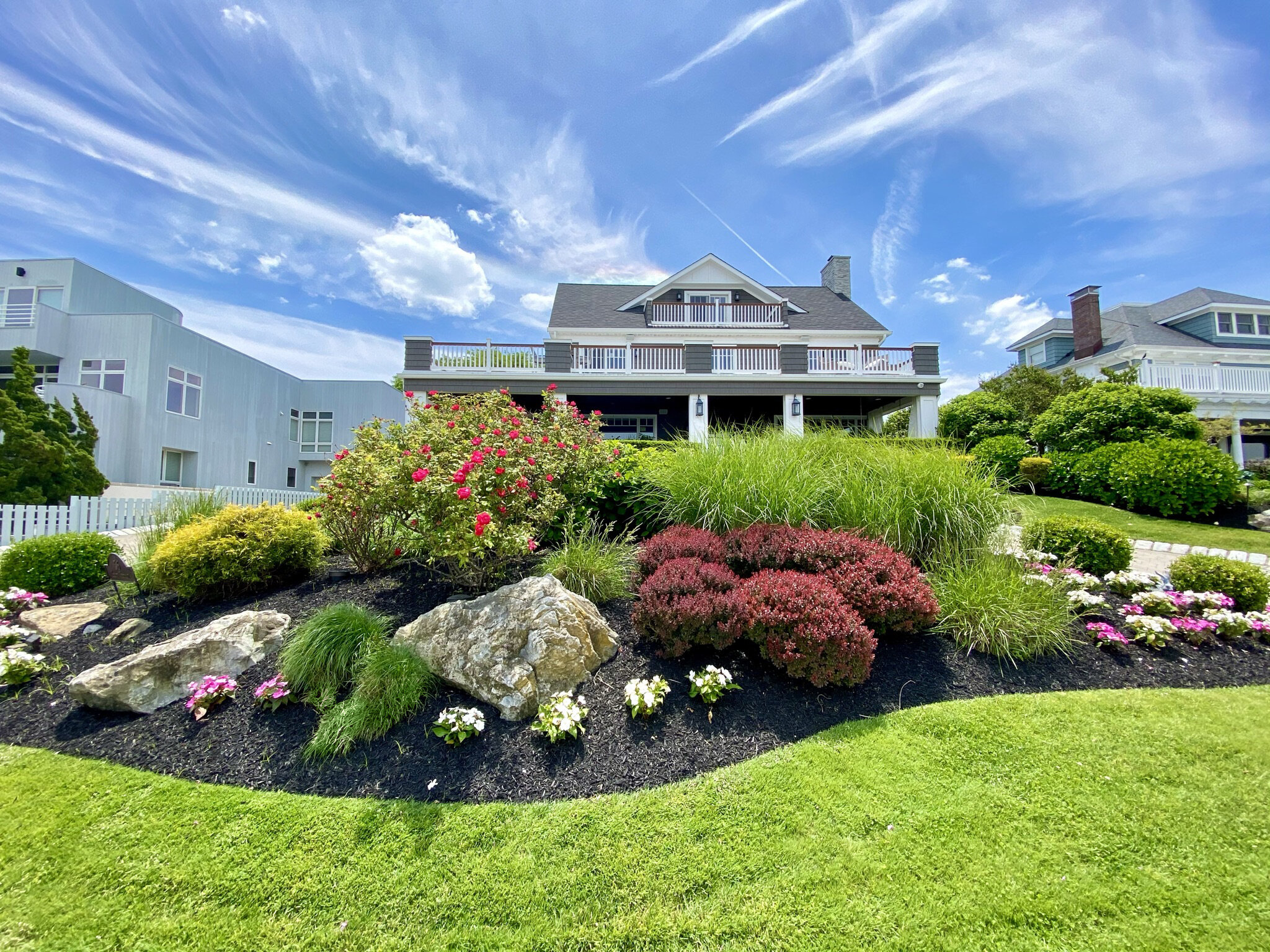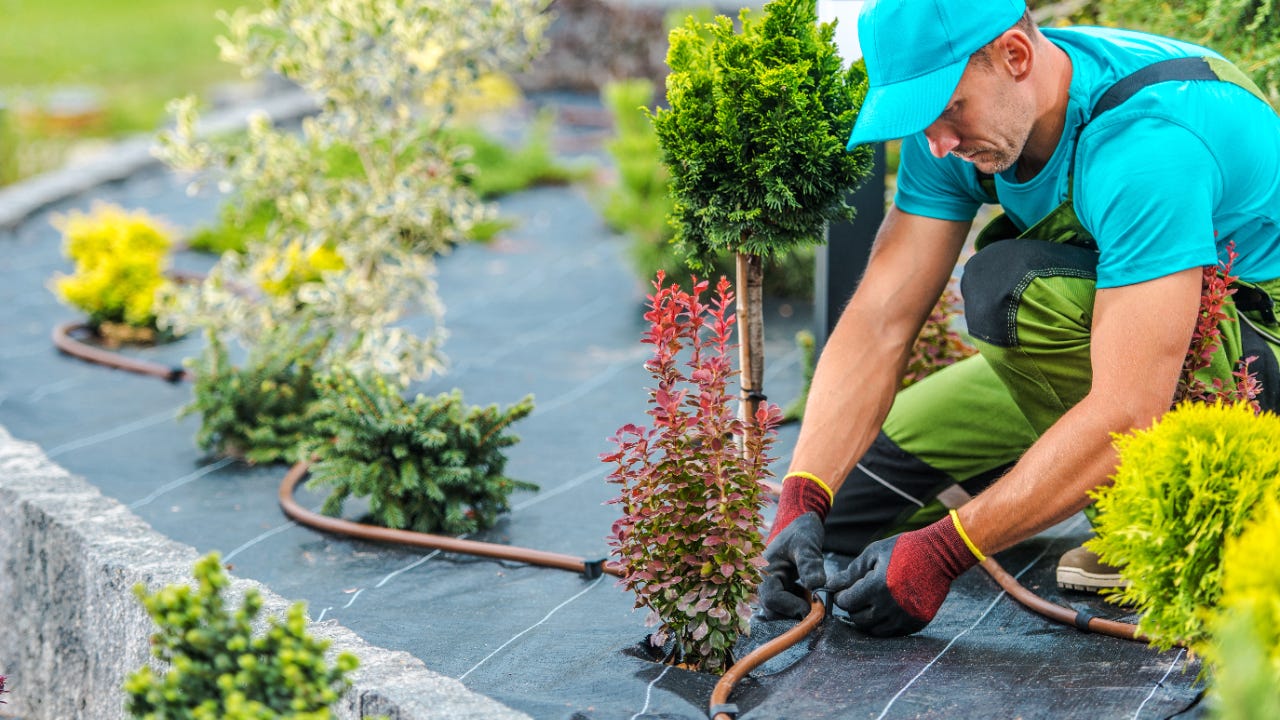A Comprehensive Guide to Designing and Implementing Effective Landscaping Solutions
The art and science of landscaping extend past plain appearances; they entail a thoughtful integration of layout concepts, ecological stewardship, and useful application. What strategies can one employ to make certain these landscapes not just grow but also thrive in consistency with their surroundings?

Recognizing Landscape Layout Concepts
One could question what fundamental aspects add to effective landscape design. At its core, effective landscape layout depends upon a number of essential concepts that guide the setup and choice of components within an area. These principles consist of unity, proportion, equilibrium, and rhythm, each offering to create a harmonious exterior setting.
Unity refers to the cohesive connection among various elements, guaranteeing that they function with each other visually and functionally. Equilibrium can be achieved via asymmetrical or in proportion setups, permitting the landscape to really feel secure and inviting. Proportion entails understanding the range of components in regard to each various other and the surrounding atmosphere, promoting visual consistency and comfort.

Analyzing Your Outdoor Space
Before applying the principles of landscape style, a detailed assessment of your outside room is vital. This preliminary examination aids define the scope of your landscaping job and makes certain that your design aligns with the special features of your residential or commercial property. Begin by examining the measurements of your area, taking specific measurements to recognize the available area for numerous elements such as paths, patio areas, and yards.
Next, observe the existing features of your landscape, including topography, dirt top quality, and water drainage patterns. These factors significantly influence plant option and positioning. In addition, examine the sunshine direct exposure throughout different areas throughout the day, as this will affect the sorts of plants that grow in your garden.
Consider the microclimates created by frameworks, trees, and various other challenges, as they can impact temperature and dampness degrees. Finally, bear in mind of any type of existing plants or hardscape aspects that you wish to preserve or get rid of. This extensive assessment lays the groundwork for a efficient and knowledgeable landscaping solution, making certain that your style is not only cosmetically pleasing however lasting and likewise useful for several years to come.
Lasting Landscaping Strategies
Integrating sustainable landscape design techniques is necessary for creating an eco accountable exterior area. These techniques not only advertise ecological equilibrium but likewise boost the aesthetic and useful worth of a landscape. One foundational strategy is the utilization of indigenous plants, which call for less water and upkeep while sustaining local wild animals. Applying effective watering systems, such as drip irrigation, minimizes water waste and makes certain that plants get sufficient moisture.

Another effective technique is the critical positioning of hedges and trees to give natural windbreaks and color, thus lowering energy prices (Palm Desert Landscaping). Rainfall gardens can be integrated right into the landscape layout to take care of stormwater overflow properly, filtering system toxins before they go into waterways
Choosing the Right Plants
Choosing the right plants for your landscape is vital to accomplishing both aesthetic appeal and eco-friendly harmony. The procedure begins with an understanding of your neighborhood environment, soil conditions, and the specific microenvironments within your landscape. Evaluating variables such as sunlight exposure, moisture levels, and existing plants will certainly help you pick plants that thrive in your special setting.
Consider integrating native plants, as they are well-adapted to neighborhood problems, require much less upkeep, and assistance regional wildlife. Furthermore, choosing a varied variety of species can improve biodiversity while decreasing the threat of illness and parasite break outs. It is essential to examine the development practices, growing periods, and seasonal colors of potential plants to produce a cohesive and dynamic landscape.
In addition, consider look at this now the planned use the area; as an example, if the location will experience high foot traffic, select durable ground covers. By attentively choosing plants that line up with both your aesthetic objectives and ecological demands, you can create a lasting landscape that not just improves your home however also contributes positively to the bordering community.

Application and Maintenance Approaches
As soon as the best plants have been picked for your landscape, the focus shifts to efficient implementation and recurring upkeep techniques. Effective installment starts with correct site prep work, that includes dirt testing to establish nutrient degrees and pH, followed by changing the soil as required. Very carefully prepare plants according to their development habits and light requirements, guaranteeing ample spacing to promote healthy and balanced growth.
Watering is an important element of execution. Develop a watering schedule that takes into consideration the details needs of each plant species, adjusting for seasonal changes. Utilizing drip irrigation systems can boost water efficiency and minimize runoff.
Maintenance approaches must be executed to guarantee the long life and vitality of your landscape. Routine jobs include weeding, mulching, and pruning to control growth and protect against disease. Fertilization needs to be conducted based on soil examinations, supplying the necessary nutrients without over-fertilizing.
Keeping an eye on for parasites and conditions is vital; early discovery can prevent considerable damages. Seasonal changes to maintenance routines, such as preparing and winterizing perennials for spring development, will certainly ensure that your landscape remains healthy and visually enticing year-round.
Verdict
Finally, reliable landscaping options require a thorough understanding of style principles, thorough analysis of outside areas, and the application of sustainable methods. The option of suitable plant species plays a critical function in enhancing aesthetic allure and environmental durability - Palm Desert Landscaping. Effective application and recurring upkeep additionally ensure the longevity and vigor of landscapes. By incorporating these components, landscapes can be changed Visit Website into beautiful, useful atmospheres that advertise biodiversity and add favorably to community health.
One could wonder what fundamental aspects add to efficient landscape layout. At its core, successful landscape layout pivots on a number of vital concepts that lead the plan and selection of aspects within a room.Choosing the right plants for your landscape is crucial to attaining both visual appeal and ecological harmony. It is important to assess the development practices, blooming durations, and seasonal colors of possible plants to produce a Website natural and dynamic landscape.
When the right plants have actually been picked for your landscape, the emphasis moves to effective application and continuous upkeep approaches.